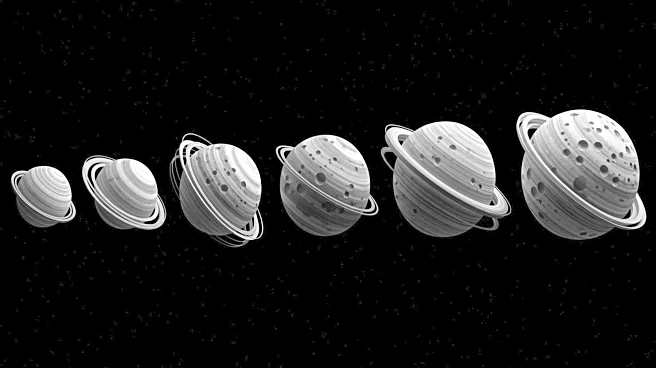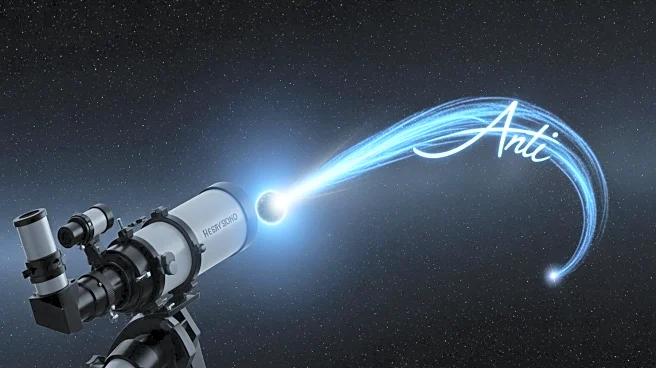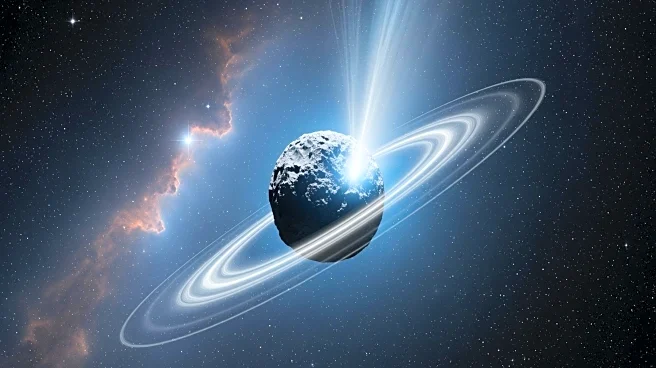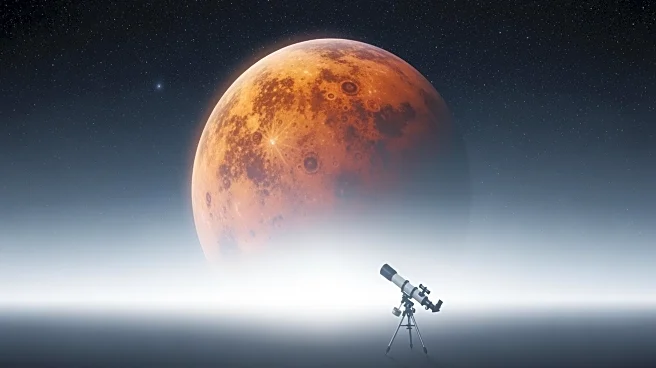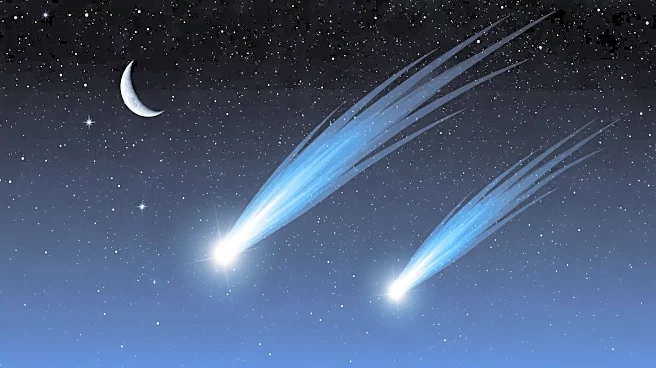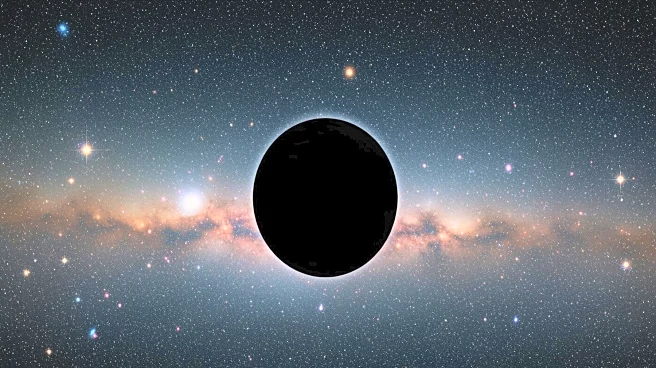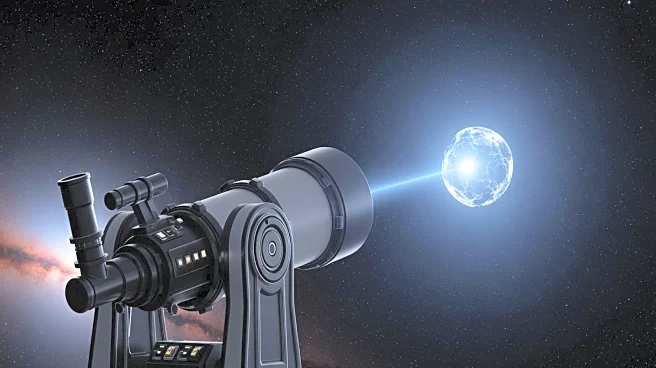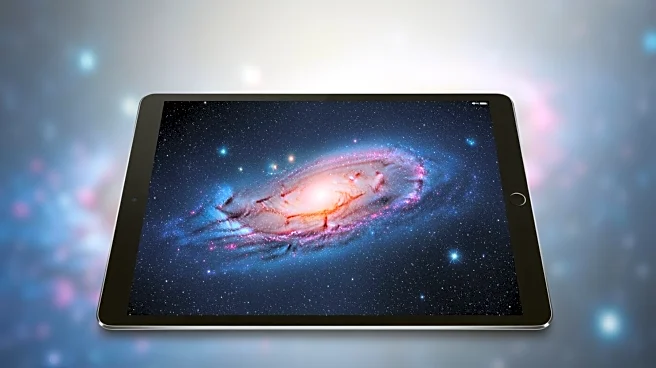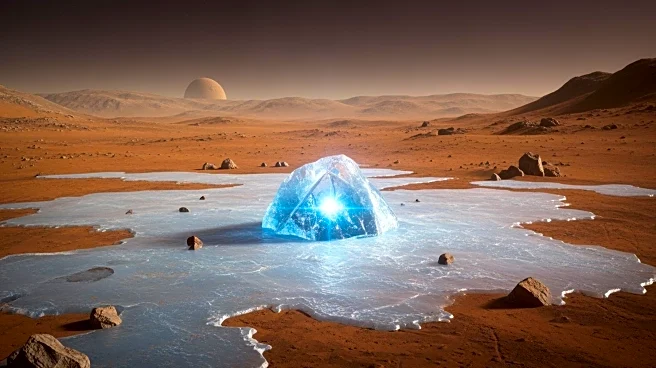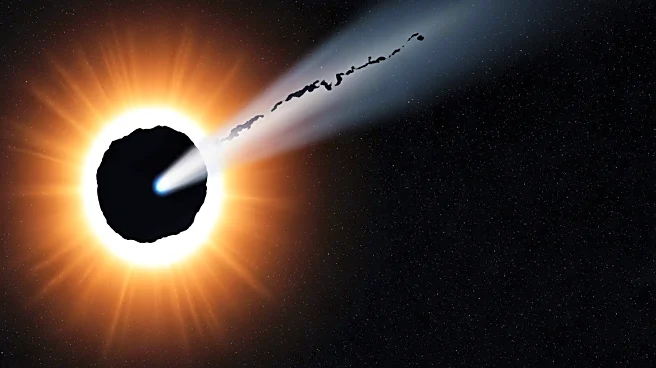What's Happening?
Recent observations by NASA's New Horizons spacecraft have revealed that small icy bodies beyond Pluto's orbit, known as Kuiper Belt Objects (KBOs), tend to rotate in a direction opposite to their orbit around
the Sun. This retrograde rotation is unexpected and suggests a gentle pairing process during their formation. The findings, presented by planetary scientist Simon Porter, indicate that contact binaries, like Arrokoth, are more common than previously thought. These observations challenge existing planetary formation models and provide new insights into the behavior of distant solar system objects.
Why It's Important?
The discovery of retrograde rotation among KBOs has significant implications for understanding planetary formation processes. It suggests that the gentle merging of objects in the Kuiper Belt may lead to unique rotational characteristics, which could refine models of how planets and other celestial bodies form. This research enhances our knowledge of the solar system's evolution and the dynamics of its outer regions. The findings could also impact future missions aimed at exploring distant solar system objects, as understanding their behavior is crucial for mission planning and execution.
What's Next?
Further observations and studies are expected to continue, particularly with the Vera C. Rubin Observatory, which has the capability to observe the brightest KBOs from Earth. This observatory will provide additional data to support or challenge the findings from New Horizons, potentially leading to a deeper understanding of the Kuiper Belt's dynamics. As more KBOs are studied, scientists hope to refine planetary formation models and explore the implications of retrograde rotation on the solar system's history.
Beyond the Headlines
The unexpected rotational behavior of KBOs raises questions about the fundamental processes of planetary formation and the forces that shape celestial bodies. It challenges the assumption that all objects in the solar system follow the same rotational patterns, suggesting that unique conditions in the Kuiper Belt may lead to different outcomes. This research could lead to a reevaluation of how we understand the formation and evolution of the solar system, highlighting the complexity and diversity of its components.
